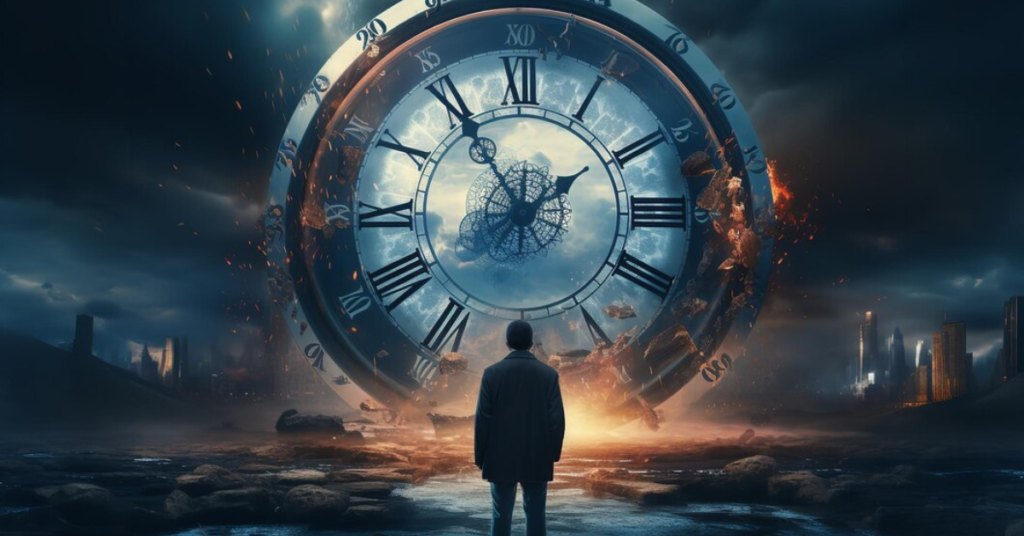Time, a concept so integral to our lives, is simultaneously elusive and enigmatic. As a child, I found myself at odds with the rigid schedules imposed by the world around me. My erratic sleep patterns in college did little to tether me to the conventional understanding of time. This has led me on a quest to unravel the many dimensions and interpretations of time. What is time, really? Is it a mere construct of human invention, or does it hold deeper significance within the fabric of the universe? This article delves into the fascinating realms of time, exploring its scientific, philosophical, and cultural interpretations.
The Physical Nature of Time
Time in Classical Physics
In classical mechanics, time is viewed as a linear, absolute entity. Sir Isaac Newton posited that time flows uniformly, irrespective of external influences. Newton’s conception of time as an absolute, mathematical framework forms the bedrock of classical physics. This view is intuitive and aligns with everyday experiences where time appears to march steadily forward, marked by the ticking of a clock or the changing of seasons.
Time and Relativity: A Revolution in Understanding
The advent of Einstein’s theories of relativity in the early 20th century revolutionized our understanding of time. In special relativity, time is intertwined with space to form a four-dimensional continuum known as spacetime. Time, far from being absolute, is relative and can vary for different observers depending on their velocity and gravitational field. This phenomenon, known as time dilation, implies that a moving clock ticks slower compared to a stationary one. General relativity further complicates the picture by suggesting that massive objects warp spacetime, causing time to slow down in stronger gravitational fields. These insights challenge our everyday perceptions and hint at a more complex nature of time.
Time and Quantum Mechanics
The Uncertainty of Time
Quantum mechanics introduces a further layer of complexity to the concept of time. The Heisenberg uncertainty principle, which dictates that certain pairs of physical properties cannot be measured precisely at the same time, extends to the energy-time uncertainty relation. This principle suggests that the energy of a system and the time over which it is measured cannot both be known with arbitrary precision, indicating a fundamental limit to our ability to measure time at quantum scales.
Quantum Entanglement and Non-Locality
Time in the quantum realm also interacts intriguingly with the phenomenon of entanglement, where particles become interconnected in such a way that the state of one instantly influences the state of another, regardless of distance. This instantaneous connection seemingly defies the conventional understanding of time and raises questions about the nature of causality and temporal order in the quantum world.
Philosophical Perspectives on Time
Time as an Illusion
Several philosophers have posited that time is merely an illusion. The ancient Greek philosopher Parmenides argued that change, and thus time, is an illusion. In the modern era, the philosopher J.M.E. McTaggart famously argued in his “Unreality of Time” that time does not exist because our perception of temporal flow is inconsistent and contradictory. According to McTaggart, the concepts of past, present, and future are not real distinctions but rather a product of our consciousness.
Time as a Measure of Change
Aristotle, on the other hand, viewed times as a measure of change. He contended that times is not a standalone entity but is relative to motion and change. Times, in this view, is a sequence of events marked by changes in the state of objects. This perspective aligns with our everyday experience where times is often measured by the progression of events and changes in our environment.
Cultural Conceptions of Time
Linear and Cyclical Time
Cultural interpretations of times vary widely. Western cultures typically adopt a linear conception of times, viewing it as a progression from past to future with a distinct beginning and end. This perspective underpins many aspects of Western life, including historical narratives, scientific progress, and the concept of personal growth and development.
In contrast, many Eastern and Indigenous cultures perceive times as cyclical. The cyclical view sees times as a series of repeating cycles, such as the seasons, lunar phases, and agricultural cycles. This perspective emphasizes the continuity of life and the interdependence of all things. For example, in Hindu philosophy, times is seen as an endless series of cycles, each representing the creation, preservation, and dissolution of the universe.
The Fluidity of Time in Modern Culture
Modern technology and globalization have further complicated our relationship with times. The rise of digital communication and the internet has created a sense of instantaneous connectivity that transcends traditional times zones and schedules. This has led to a more fluid and fragmented experience of times, where the boundaries between work and leisure, day and night, and past and present become increasingly blurred.
Psychological Perceptions of Time
Subjective Time and Temporal Illusions
Our perception of times is highly subjective and can be influenced by various factors such as age, emotion, and context. The phenomenon of temporal illusion, where times appears to slow down or speed up depending on circumstances, is well-documented. For instance, times seems to fly when we are engaged in enjoyable activities, while it drags during periods of boredom or distress.
The Role of Memory and Anticipation
Psychologists also explore the role of memory and anticipation in shaping our experience of times. Memory allows us to reflect on past experiences, while anticipation enables us to plan for the future. These mental processes create a sense of continuity and coherence in our perception of times, linking past, present, and future into a cohesive narrative.
The Arrow of Time and Entropy
The Thermodynamic Arrow
One of the most profound questions in the study of times is why it seems to flow in one direction – from past to future. This phenomenon, known as the arrow of times, is closely linked to the concept of entropy in thermodynamics. Entropy is a measure of disorder, and the second law of thermodynamics states that entropy in a closed system always increases over times. This increase in entropy creates a distinction between past and future, giving times its directional quality.
Cosmological Implications
The arrow of times also has cosmological implications. The expansion of the universe, as described by the Big Bang theory, suggests that times has a beginning and is moving towards an increasingly entropic state. This cosmological arrow of times aligns with our everyday experience of time’s unidirectional flow and raises questions about the ultimate fate of the universe.
Time Travel: Science Fiction or Reality?
Theoretical Possibilities
The concept of times travel has long fascinated scientists and storytellers alike. While often considered the realm of science fiction, times travel has intriguing theoretical underpinnings in physics. Solutions to Einstein’s field equations in general relativity suggest the possibility of closed timelike curves, which could, in theory, allow for travel back and forth in times. However, such solutions require exotic conditions, such as negative energy or wormholes, that remain speculative and beyond our current technological capabilities.
Paradoxes and Practicalities
Times travel also presents numerous paradoxes, such as the infamous grandfather paradox, where a times traveler could potentially prevent their own existence by altering the past. These paradoxes challenge our understanding of causality and raise questions about the feasibility of times travel in practice.
Time in Art and Literature
Temporal Themes in Literature
Times is a central theme in much of the world’s literature, reflecting its profound influence on human experience. Authors like Marcel Proust and James Joyce have explored the fluidity and subjectivity of times through their intricate narrative structures and stream-of-consciousness techniques. These literary explorations offer insight into the complexities of human perception and the ways in which times shapes our lives and identities.
Time in Visual Art
Visual artists have also grappled with the concept of times, using various techniques to depict its passage and effects. From the frozen moments captured in Renaissance paintings to the dynamic, times-laden compositions of Futurist and Cubist art, artists have sought to represent the elusive nature of times and its impact on the material world.
The Future of Time: Scientific and Technological Horizons
Advances in Time Measurement
The quest to measure times with ever-greater precision continues to drive scientific and technological advancements. Atomic clocks, which measure times based on the vibrations of atoms, have achieved unprecedented accuracy, leading to the development of technologies such as GPS and enhancing our understanding of fundamental physical processes.
The Quest for a Unified Theory
The search for a unified theory of physics that reconciles quantum mechanics and general relativity may also yield new insights into the nature of times. Such a theory could provide a deeper understanding of the fundamental structure of spacetime and the origins of the universe, potentially transforming our conception of times.
Artificial Intelligence and Time Management
Artificial intelligence is also reshaping our relationship with times, offering tools to optimize times management and enhance productivity. AI-driven systems can analyze patterns in our activities and provide personalized recommendations to help us make the most of our times. These technologies have the potential to fundamentally alter how we perceive and utilize times in our daily lives.
Conclusion
The concept of times, from its scientific foundations to its philosophical and cultural interpretations, remains a source of endless fascination and intrigue. As we continue to explore the mysteries of times, we are likely to uncover new dimensions and insights that challenge our current understanding. Whether viewed through the lens of physics, philosophy, or everyday experience, times is a profound and multifaceted concept that shapes every aspect of our existence. My own journey to comprehend the nature of times has revealed its complexity and beauty, deepening my appreciation for this enigmatic dimension that weaves together the tapestry of our lives.







